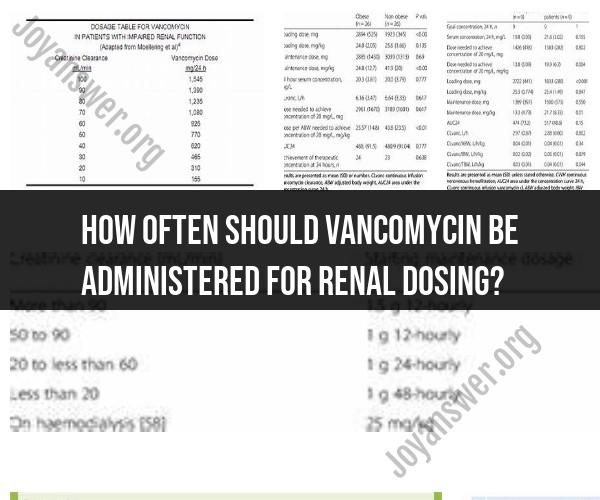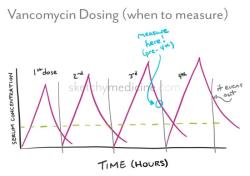How often should vancomycin be administered for renal dosing?
The frequency of vancomycin administration for renal dosing depends on several factors, including the patient's renal function, the severity of the infection being treated, and the dosing regimen chosen by the healthcare provider. Vancomycin dosing can vary, but there are two common dosing approaches:
Intermittent Infusion (Multiple Daily Dosing): In this dosing regimen, vancomycin is administered multiple times a day, typically every 8 to 12 hours. The exact frequency and dose depend on the patient's renal function, weight, and the specific protocol chosen by the healthcare provider. This approach is commonly used when targeting a specific peak concentration to optimize antibiotic efficacy while avoiding toxicity.
Extended-Interval Dosing (Once-Daily Dosing): Extended-interval dosing involves giving a higher dose of vancomycin less frequently, often once daily. This approach is based on pharmacokinetic principles and relies on the concept of achieving a high enough peak concentration to effectively treat the infection while allowing for longer intervals between doses. Extended-interval dosing is often used in patients with stable renal function and is sometimes preferred because it can simplify the dosing regimen and reduce the risk of nephrotoxicity.
The choice between these dosing regimens should be made by a healthcare provider, taking into consideration the patient's individual factors. Here are some general considerations:
Intermittent Infusion: This dosing regimen may be preferred in patients with fluctuating renal function, those who are critically ill, or when a specific peak concentration is desired for certain types of infections (e.g., endocarditis). It allows for more precise control of drug levels but may require more frequent administration and monitoring.
Extended-Interval Dosing: This dosing regimen can be suitable for patients with stable renal function and those who can tolerate larger individual doses. It reduces the need for frequent administration and may be preferred for outpatient or less severe infections. However, careful monitoring of renal function and drug levels is still necessary.
It's important to note that therapeutic drug monitoring (TDM) is essential when using vancomycin, especially in patients with renal impairment. TDM involves regularly measuring vancomycin concentrations in the blood to ensure that therapeutic levels are achieved and maintained while avoiding toxicity.
Ultimately, the frequency of vancomycin administration should be determined by a healthcare provider, and it may be adjusted based on the patient's response to treatment, changes in renal function, and other clinical considerations. Individualized dosing and monitoring are crucial to ensure the effective treatment of infections while minimizing the risk of adverse effects.












